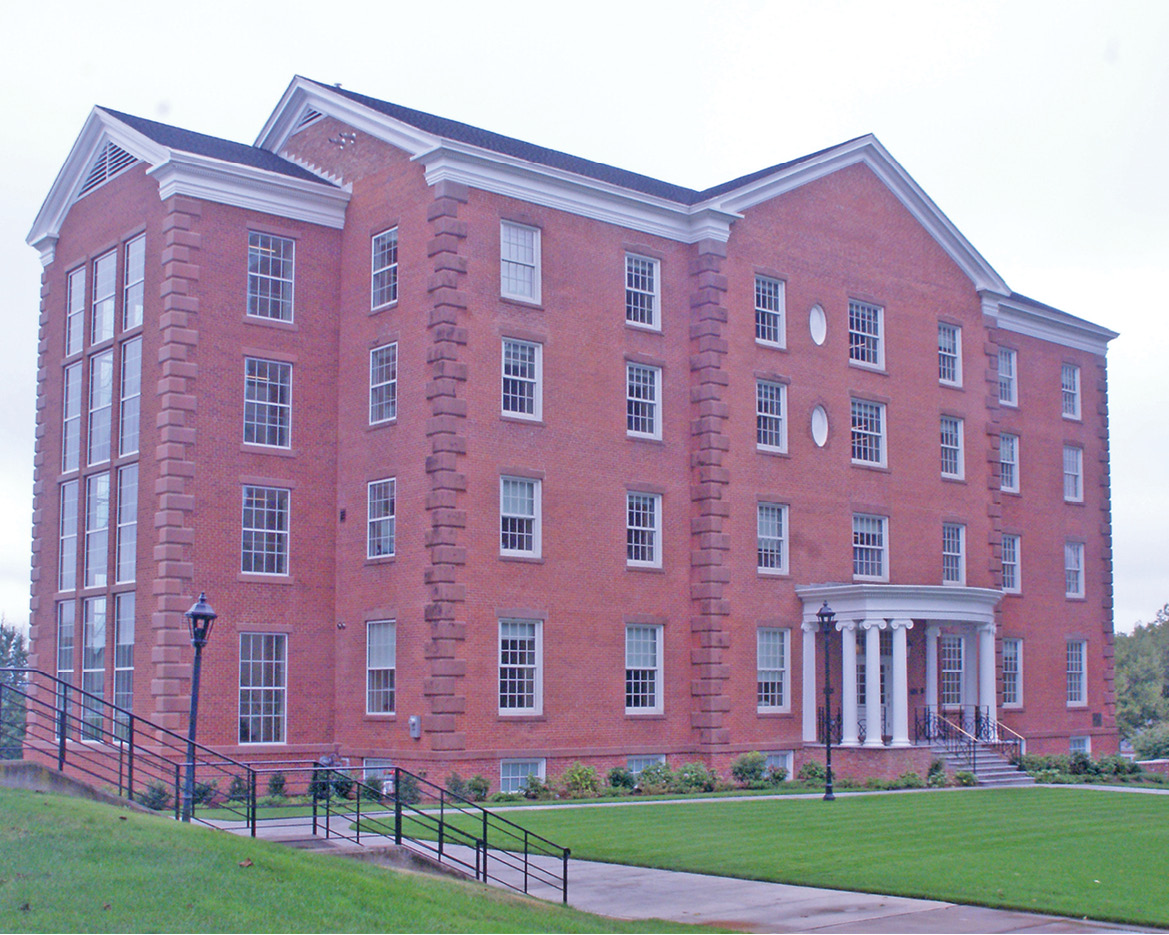Many of us have been watching the restoration/rebuilding of Memorial Hall on the campus of Suffield Academy. Who could fail to be fascinated by what appeared to be an old façade propped up by next to nothing? Of course things are not always as they appear; behind that facade was a sturdy new wall, while the entire interior of the building was being replaced. The resulting edifice is extraordinary, a combination of traditional and modern styles which adds extra dignity to our beautiful Main Street. It houses the departments of English and Languages as well as an assortment of open work spaces with magnificent views of the western hills.
As lovely as the new structure is, with the latest in technology and convenience and beauty, the most impressive thing about the building is the process by which it came to be what it is today, and the way in which the final result contributes to the teaching and learning which go on at the Academy on a daily basis. The first thing an observer notices about the hallways, classrooms, storage areas, and offices is that everything was thoughtfully and carefully planned with an eye to the future. Classrooms were set up to meet the needs of each individual teacher, but with the kind of flexibility that will be useful for future generations bringing changes to education that today we cannot foresee.
And how did all this come about so successfully? It was a time consuming and detail-oriented process. First, focus groups met together and visited other schools, probing to find out what had worked and what had not worked with other building projects. Next each group was asked to envision the ideal space for adults and students. Samples of furniture were brought in, and students were encouraged to try them out and record their opinions. As many ideas as possible were incorporated into the plan. Each classroom is arranged so as to allow for traditional seating arrangements, U-shaped arrangements, pods, pairs, or whatever other configuration is deemed appropriate. The technology everywhere in the building is beyond description; you name it, they’ve got it.
During the lengthy planning process, the school approached the top 15 colleges that Suffield Academy students attend, and solicited their points of view about the changes in educational needs that are rising to the fore. They also made inquiries among various employers, asking similar questions. They learned that colleges and businesses/corporations look for skills in collaboration, communication, and creativity above all else. As a result, final exams as we used to know them are diminishing at the Academy, as in many schools, and final assessments these days rely more on presentations and projects, since those avenues will be most useful in the workplace of tomorrow.
Best of all, these trends fit very well with the educational philosophy of the Academy. The school recognizes that students need spaces where relationships can be created, because teaching and learning are relational. There needs to be an atmosphere of openness and trust, reflected both in the tone of interaction at the school and in the architecture. As Sara Yeager, Dean of Academics and Faculty said, “Suffield Academy cares about the heart as well as the mind.” The old/new Memorial Hall building presents just that underlying concept.
